Sometimes we take the ability to walk or shop for granted, and when we get older, it becomes challenging to stay active and mobile as our younger days. Aging impacts our ability to remain active, but it should not prevent us from enjoying our life.
Some of us struggle with general movement during our daily lives at different complexities. Some of these struggles are temporary, but some are permanent disabilities.
Regardless, our mobility, walking and daily living movement-related challenges impact on both physical and emotional well-being.
Regardless, if the mobility issue is because aging or experienced an unfortunate circumstance (e.g. accident) resulting in a ‘disability’, one drastically needs support. We prefer to be mobile, and sometimes we feel a nuisance when continuously asking for help from others.
During the years, scientists worked extensively to reach levels of innovation and develop mobility aid for different reasons. Based on your mobility challenges, they are due to your aging process or disability, the complexities of finding the best mobility solution is varied. For this reason, different types and shapes of mobility aids have become available for you to choose from.
So, let’s see the different options available that allow a person to keep their freedom and stay mobile during our elderly or disabled years.
Mobility allows a person to experience independence and this Guide to Mobility, Daily Living and Walking Aid Options for Elderly and Disabled people aims to summarize all the options available.
These mobility options reflect the different lifestyles people take part in.
In the event a person experiences aging or disability, it means a continuation of life’s responsibilities differently. The biggest challenge when investing in mobility aid refers more to understanding what you need.
Mobility aids allow for different movement types aligned with people’s expectations. It aims to make life easier, and for this reason, I allocate the below sections to ease your decision-making process.
How and When to decide if you need a Mobility Aid?
At first, we must determine if we need mobility aid or not.
I am sure many of us cannot wait to find a reason to purchase a stylish walking stick and a scooter to speed at the shopping malls. Still, we require realistic thinking and decide on the best option that suits our personalities and relieve pain (if any).
The second decision relies on the devices, equipment or gadgets we desire to keep on moving. The mobility aids depended significantly on the individual’s physical status and the complexity as a human being deals with daily.
I referred to the ‘day’, but at night visiting the bathroom also presents a problem. I, therefore, to avoid any confusion, refer to the term ‘daily routine activities’ in the article, which include human mobility during all times of the day.
One also needs to decide on your activity levels, the injuries you or your loved one experienced and the weaknesses one face when moving or traveling to different places.
Let’s see the critical decisions we need to make when deciding on a mobility aid.
The questions sound easier, but we need to analyze the situation we in before deciding.
For example, determine if you partially immobile, can you walk but slowly, do you still experience some movement in your body or do you experience a full disability when using your legs? Do you struggle with your back, legs, knees or feet? Are any parts of your body paralyzed or almost paralyze?
It always helps to decide in communication with a health specialist (e.g. occupational therapist) who deals with these matters daily. The specialist carry specific scientific knowledge and provides the input in the event you make use of a mobility aid.
My suggestion includes asking the following key questions relating to mobility, for example:
- What is my present status? Can I still walk to some level?
- What is the outlook of my immediate terrain? Do I enjoy walking in the garden?
- Can I drive a car?
- If I visit the shops, can I walk or do I need support?
- Which areas do I usually visit during the day?
- How does being ‘immobile’ or ‘disable’ impact on my work and social life?
- Can I walk by myself, or do I need support?
- What are the distances between my home and the places I usually travel to?
- Are the environment and the travel path safe to allow the use of a mobility aid?
Many more questions people may ask, but it provides a general idea of the challenges individuals struggle with when experiencing immobility. It, therefore, requires a more sophisticated approach than just purchasing the first device you see.
The analytical approach during the decision-making process allows the individual to gain the best support they need.
Now, let’s see the mobility or walking aid products one finds in the market and the details surrounding the equipment.
Types of mobility or walking aid products
The following key aid products allow a person to reach improved levels of mobility. These options include diverse possibilities from canes, walkers, rollators, wheelchairs and scooters.
The next few paragraphs aim to provide an insight into the types, dynamics and risks of using each type of mobility devices.
Each device carries certain limitations, risks, and for this reason, you should consider your ‘safety’ as the priority when using these products.
[et_bloom_locked optin_id=optin_3][/et_bloom_locked]
Canes or Walking Sticks
We ask ourselves the meaning between the use of a cane or walking stick.
We remember sticks used by our grandparents without grasping the reasons for using it as a mobility aid. As children, we sometimes thought all elderly people use walking sticks as a ‘fashion’.
However, based on my work experience working with aged and disabled individuals and research, I now realize the complexity in the canes and walking sticks design and the extensive reasoning behind their use.
Now it clearer the difference between a cane or the simple walking stick method to support walking. The walking stick provides temporary support and a level of stability. It also allows the individual to balance themselves when walking or climbing.
The essence of a walking stick lies within reaching greater heights or when moving towards difficult areas. For example and you need to find a grip. For example, canes and walking sticks can support elderly people who enjoy walking and sometimes need support at uneven ground levels or at nature strips.
The cane offers something additional to sticks and commonly provides long-term support. In the event the individual struggles with joint pain, for example, the cane removes the pressure from the joint and helps with the release of pressure at the problem areas.
The canes and walking sticks shift your body pressure from the legs to the upper levels of the body. Subsequently, it removes the pain from the lower levels at the body and allows a person to walk easier.
Besides the practicality of the cane, the inventors developed different shapes and sizes to suit diverse mobile needs.
Let us see the list of different types of canes available for use.
Types of Canes
Adjustable cane
These canes allow for easy adjustment to suit a person’s height.
Forearm cane
Forearm canes allow a person to shift the weight from the wrist to the arm.
Quad cane
Quad cane provides the most stable approach because it comprises four feet basis and creates a highly stable platform and a feel.
Let’s discuss the walking stick approach and identify the advantages and disadvantages of using the product.

Advantages and Disadvantages of Walking Sticks
As mentioned earlier on the walking stick presents a temporary approach and not necessarily a good pick if you permanently need mobility aid support.
The walking stick aims to provide you with support when taking a stroll in the garden or the beachfront as a very basic level.
Before purchasing a walking stick, individuals should take into account that the stick only carries a limited weight. If you walk a lot or need something more permanent, the cane option presents a better alternative.
Other matters individuals may take into account that the canes present a more formal outlook. If you are aging but still into fashion, different shapes and sizes allow an individual to maintain the exclusive outlook.
Tip: Osito Foot Massager can help you with leg pains.
Knee Walkers
The Knee walkers aim to provide aging or disables person with the ability to remove the pressure from painful areas.
This mobility aid requires placing the one knee on the relevant platform to remove the pressure or thigh pain, knee pain, calf pain, ankle or foot pain. It allows the other leg, the healthier one, to move freely with no discomfort.
The key advantage of a knee walker includes the removal of strain from the body when walking. The device prevents you from experiencing upper body strain or back problems due to pains in the leg.
Advantages of Using a Knee Walker
Some other advantages related to the knee walkers include:
- The most knee walkers offer a comfortable knee pad readily available for use by the elderly or injured individuals.
- The mobility aid’s high customization allows one to adapt the device to meet the person’s height requirements.
- The product handlebars permit the individual to steer to different directions easily. Especially in the event of walking at areas attributed to constant corners or limited spaces.
For example, when walking to your closest shopping mall, these spaces normally present different shapes and places to steer your mobile aid equipment.
- The most knee walkers also allow for easy secure storage and transportation.

Rollators
The rollator referred to as a walking stick with wheels. They offer a unique experience.
Rollators come with a seat that allows an individual who feels tired to sit and recover when needed.
Besides the seat option, the aid also comes with 3 to 4 attached wheels and a handlebar.
Rollators present different shapes and sizes that allow the aging or disabled person to purchase the best option they need.
Advantages of Using a Rollator
Also, most rollators offer the following key advantages:
- The equipment allows for adjustment to different height levels.
- Rollators consists of handle breaks because of the additional wheels attached to the device.
- The mobile aid offers an easy, secure storage option, folds up and comfortably fits into a car or other transportation options.
- Some rollators adopt the tricycle outlook and supported by many elderly people.
- The market offers indoor and outdoor rollators easily adaptable to different terrains.
Things to Consider When Purchasing a Rollator
- People who intend to purchase a rollator need to review the product specifications and ensure the equipment meets their weight requirements.
- Rollators carry a higher price tag and undertaking a price gauge helps to find a mobile aid aligned with your budget capacity.
- Individuals should take a view of the seat requirements. Some seats present a lower level than others, depending on the person’s height or preferences.

Wheelchairs
A wheelchair presents straight back support with wheels and additional mechanisms for easy use. The wheelchair allows elderly and disabled people to reach levels of mobility in their environments and served as a mobility cure for many people over the years.
The wheelchair offers a miracle solution to an elderly or disabled person. Wheelchairs provides an opportunity to move around while comfortably sitting in the chair.
The wheelchair specifications changed over the years with the manual aids presenting a more challenging use.
Manual Wheelchairs
Previously people explained they struggled with movement around tight corners and the constant use of their arms became challenging. Besides, people relied on support in the event they needed to move around at uneven terrain.
The manual wheelchairs offer different shapes and sizes that allow individuals to move around in their immediate environment.
The movement requires strong upper body strength to push the wheelchair forward from behind or using the chair. It stays a known and convenient method to stay mobile if experiencing movement difficulties.
Electric wheelchairs
Luckily, inventors and engineers decided on the development of the electric wheelchair. The disadvantage of the modern wheelchair pertains to safety. The disadvantages related to the wheelchairs include the heaviness of the mobility aid that may present a challenge during transportation.
Elderly and disabled people need to take their safety into account during the use of the mobility aid.
Besides, one finds the following wheelchairs shaped aiding the elderly or disabled people’s different needs:
Heavy-duty Wheelchairs
Heavy-duty wheelchairs for people who permanently make use of a mobility aid. The chair also provides easy access to larger weight individuals.
Light or Ultralight Wheelchairs
Light or ultralight wheelchairs present a more practical approach in the event you travel by car regularly. It allows you to easily place the mobile aid in the trunk of a car if needed.
Reclinable Wheelchairs
Wheelchairs offer different modes and fashions aligned with the individual’s needs. Some mobile aid equipment allows the chair to recline for increased comfort.
Specialized Wheelchairs
Besides the general manual and electric wheelchairs, the following products allow for specialized mobile aid support and depend on the individual’s requirements:
- Deluxe Wheelchairs
Deluxe wheelchair with all the added cushions and comfort.
- Water Wheelchairs
Water wheelchair in the event you participate in sports activities.
- Rough Terrain Wheelchairs
Rough terrain wheelchairs in the event you participate in adventures or sports competitions.
- Kid-sized Pediatric Wheelchairs
Kid-sized paediatric wheelchairs adaptable to suit different size users.
- Sports or Racing Wheelchairs
Sports or racing wheelchairs are providing accessibility to disabled individuals who stay active.
- Single-arm Wheelchairs
Single-arm wheelchairs provide an improved version of the manual option where a person turns around in circles during the use of it.
- Standing Wheelchairs
Standing wheelchairs easily adaptable to reach different sitting or upright positions.
Wheelchairs offer an opportunity for individuals to regain their flexibility and enjoy life to the fullest.

Concerns of Using a Wheelchair
Some disadvantages and things you need to strongly consider when deciding to go with a wheelchair as your mobility solution include:
- The more advanced and specialized wheelchairs are costly and involve maintenance.
- You have to consider your safety and care regularly needs during the use of the product.
- The manual wheelchairs may include different user complexities.
- Heavy wheelchairs present challenges in the event of elderly people who live on their own.
- The transportation of the mobile aid may present diverse complexities if you regularly travel by car, bus or air.
- You may be prone to pressure ulcers, so it’s important to choose a good cushion for the wheelchair.
Tip: This is what we think about Roho Cushion and Star Cushion for wheelchairs.
Scooters
The mobility scooter allows a perfect opportunity for elderly and disabled individuals to reach levels of movement.
An individual who uses a scooter feels comfortable in the event of moving around or when visiting friends.
The height of the scooter allows a person to talk to people at eye level and feel part of the community.
Scooter users need not apply for a license, but it stays country dependent so best to check this with your local authorities.
Tips on Using a Scooter
If you a person who enjoys shopping, you would love the fact that most scooters come with a basket and allows individuals to buy and travel with the essentials they need.
The negativity related to the equipment refers to ethical behavior when taking part in shopping. Attempt not to scare the people walking in the same direction as you or driving on to others.
Always keep in mind people may feel intimidated when you speed around the shopping mall. It sounds humanistic, but safety stays important if using a scooter at public spaces.
A scooter may come with a more expensive price tag than the others, which cost a few dollars to $1500.
Depending on the individual’s need, a higher price tag allows for more support in the event you an active person with a socialise personality.

Who can benefit from mobility aid?
After researching the different mobility aids and the options available in the market, the question I should now answer is who benefits from the equipment.
These mobility aids offer simple to sophisticated offerings that arrive at a range of price points.
The benefits deriving from the use of these equipments aid vary in supporting the elderly and disabled people.
Walking sticks
The walking sticks provide benefits to the elderly who comprise an ability to walk but with effort. Older people who enjoy nature and prefer to stay active appreciate the availability of a walking stick.
This mobility aid provides support to an elderly or injured person who struggles to keep their balance when walking. For example, many aging people enjoy walking in their gardens or enjoy a stroll at the park.
The uneven terrain makes it difficult to balance and requires older individuals to use the necessary support. Walking sticks offer an opportunity for the elderly to stay active but place pressure at the correct places when needed. The places include balancing support in your sitting room or need to gain balance after sitting in your garden chair.
Canes
Individuals who comprise a significant problem with keeping their balance when walking enjoys the cane stick. This mobility aid allows a person to feel stable and set on the ground.
Elderly or injured people who permanently struggles to keep balance or aim to move around in their immediate environment appreciates the stick.
Knee Walkers
Moving on the knee walkers benefits people who experienced some injury to their knee, ankles, feet or lower legs.
The knee walker allows an active person to still proceed with their normal activities during the day.
Knee walkers allow rapid movements if you a busy type of person.
I find many elderly people enjoy being ‘busy’, and the knee walker enables them to move around in their environment rather quickly.
Rollators
People who enjoy the outside environment appreciate the use of a rollator. The affordability and additional chair rest option offer people the opportunity to take part in (even) sports activities and easily take a break while sitting.
The practicality of the rollator provides individuals who travel significantly with a chance to enjoy a ‘pack up and go’ approach.
Wheelchairs
Normally individuals who comprise no feeling in their legs and struggle with diverse physical disabilities benefit from a wheelchair.
As mentioned earlier, the use of a manual wheelchair presents challenges, but in this case, the elderly or disabled person could invest in a smart or electric wheelchair.
Using electric wheelchairs became extensively popular with people who struggle with back problems or contain limited strength in their upper body.
Tip: Here’s MediChannel Reviews of Star Wheelchair Cushions and Roho Cushions.
Scooters
People who still enjoy their shopping experiences mostly relish purchasing a scooter mobility aid.
The scooter offers an opportunity for healthy aging or for disabled people to easily visit the grocery store and buy the goods they need.
Elderly people can quickly move around without experiencing a fall when using a scooter, compared to a walking stick.
Sometimes individuals strive to keep their independence when they become older or disabled. The scooter provides easy and extensive support when moving around in public spaces.
[et_bloom_locked optin_id=optin_3][/et_bloom_locked]
Summary
In summary, the use of mobility aid focuses on the need of the elderly or disabled person and the injuries experienced during an accident, for example. Besides the physical constraint, a person who decides on purchasing a mobility aid requires an understanding of the equipment available and the range of options each type comes with.
The mobility aids identified during the article research referred to canes or walking sticks, canes, knee walkers, rollators, wheelchairs or scooters as the most popular options. Each mobility type presents a different dynamic, use and safety precautions. The different shapes and sizes allow individuals to feel excited about purchasing their support devices.
People who benefit from mobility aids typically include the elderly who struggle with continuous movement, injured people or disabled individuals who lost the ability to walk.
The ability to continue participation in assorted sport or walking exercises provide individuals with a feeling of independence and well-being.
Saying so, you should use these mobility aid options with the sense of still taking part in social events or feeling part of the communities. The diverse scientific investments continue to build upon the expansion of mobility aid knowledge and engineering opportunities.
Tip: Carousel Sliding Bench with Swivel Seat is a safer way to get into a shower or bathtub.

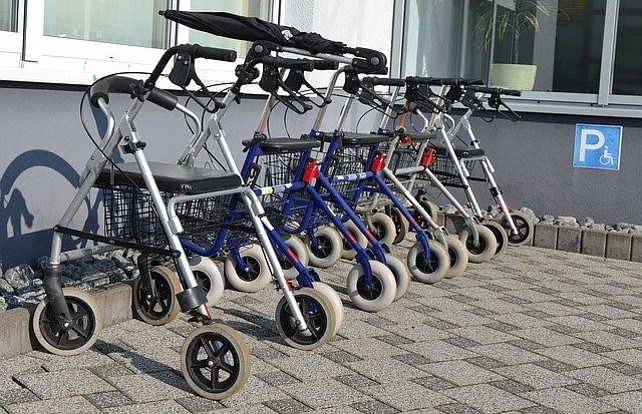
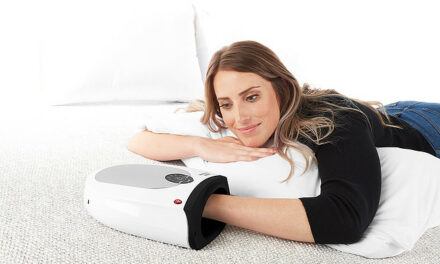
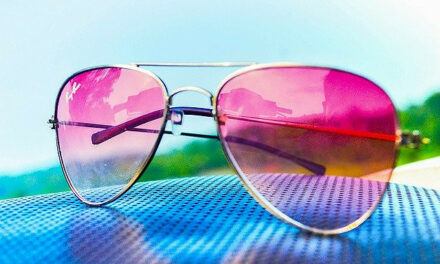
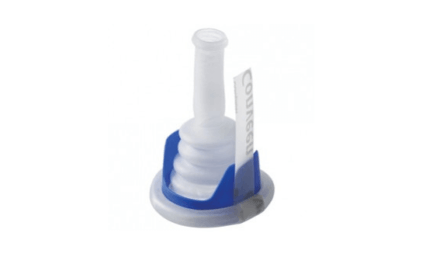
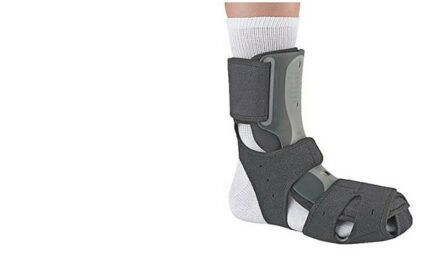



0 Comments